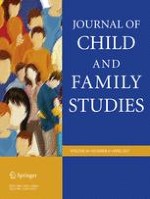23-11-2016 | Original Paper
Parent-Professional Alliance and Outcomes of Child, Parent, and Family Treatment: A Systematic Review
Gepubliceerd in: Journal of Child and Family Studies | Uitgave 4/2017
Log in om toegang te krijgenAbstract
This review systematically explored research examining the relation between parent-professional alliance and outcomes of psychosocial treatments provided to children, and their parents and families. Study findings and methodological characteristics were reviewed to investigate the evidence linking the alliance between parents and professionals to outcomes of child, parent, and family treatment as well as to identify factors that may influence the alliance-outcome association. A systematic review of the literature was conducted that included a search of three electronic databases using specified search terms, followed by a hand search to identify relevant studies. A total of 46 studies (37 published articles and 9 unpublished dissertations) met inclusion criteria. Overall, the findings indicated that higher levels of parent-professional alliance were significantly associated with improved clinical outcomes and stronger treatment engagement. However, some studies found that the parent-professional alliance was not significantly related to clinical outcomes or treatment engagement, and a few studies showed that higher levels of alliance were related to less positive clinical outcomes and lower levels of treatment engagement. Several theoretical (problem type, child age, parent sex) and methodological (source and timing of alliance measurement, alliance-outcome informants, outcome domain, timing of outcome measurement) factors were identified that could influence the alliance-outcome association. Together, our findings emphasize the importance of alliance awareness when working with parents as well as a need for future studies to investigate factors influencing the quality of the parent-professional alliance and alliance-outcome association in child, parent, and family treatment.
